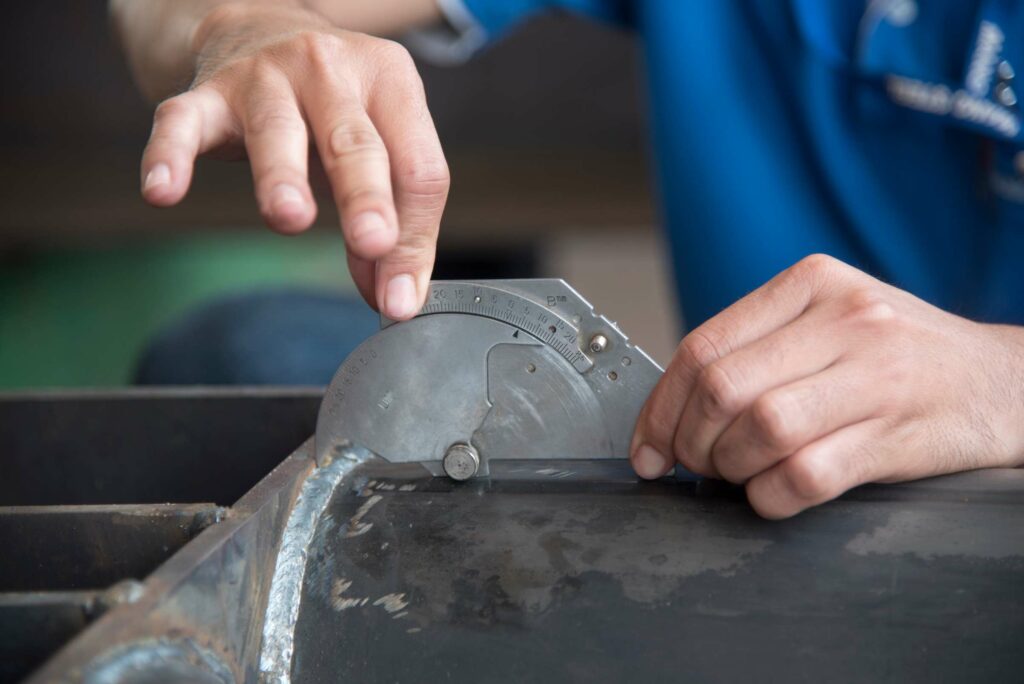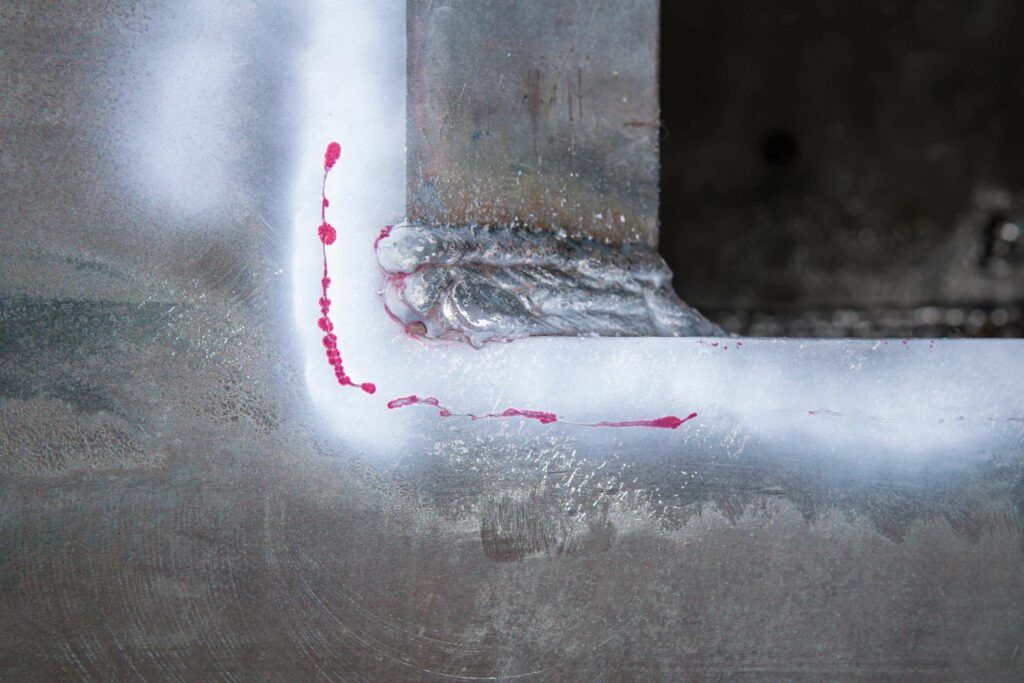Visual Welding Inspection (VT) is a non-destructive testing (NDT) technique used in the oil and gas industry to inspect welds visually for any defects or imperfections.
VT is important in ensuring the integrity of welded components and structures. Welding is a critical process used in the fabrication and construction of oil and gas equipment, including pipelines, tanks, and pressure vessels. Defects in welds can lead to material failures and have severe safety and financial implications.
Our team of highly experienced certified professionals offers quality industrial visual weld inspection in Grande Prairie and the Peace Region. We use the latest technology to ensure you get the information you need.
Our CWB Level 3 welding inspector has 15 years of experience in the QC and NDT industry and has strong attention to detail. Through ongoing training, our team stays current on all the latest codes and industry requirements, ensuring a high inspection quality standard.
Call us today, and we can ensure that the components in your project meet industry standards and regulatory requirements.


What is Visual Welding Inspection?
The VT process involves examining the surface of the weld to identify any visible signs of defects or issues, such as cracks, porosity, incomplete fusion, and surface irregularities.
Visual inspection is typically performed after welding and before further non-destructive testing methods are performed. The process involves a trained inspector and various inspection tools, such as magnifying lenses, flashlights, and borescopes, to examine the weld and check for any visual defects.
Visual inspection is crucial to the quality assurance and quality control process. Regular visual inspection can help prevent costly equipment failures and ensure the safety of workers and the environment.
What are the Uses of Visual Welding Inspection?
Visual Welding Inspection has a range of including:
1. Weld quality assurance:
Visual inspection is used to verify that the welding process is performed in accordance with specified standards and procedures. This ensures that the welding process produces high-quality, reliable welds that meet the required specifications.
2. Weld defect detection:
Visual inspection can detect defects and imperfections in welds, such as cracks, porosity, incomplete fusion, and surface irregularities. This allows for the timely identification of issues and corrective measures needed.
3. Weld repair verification:
Visual inspection is used to verify the effectiveness of weld repairs performed on damaged components. This ensures that the repairs are carried out correctly, and the part is returned to service with its integrity intact.
4. Welder qualification:
Visual inspection is used to assess the skills and performance of welders to ensure they meet the required standards and procedures. This helps to ensure that welds are performed correctly and safely.
5. Weld documentation:
Visual inspection results are used to document the quality and integrity of welds. This provides a record of the welding process and allows for traceability and accountability in case of any issues or failures.
Visual inspection is crucial to the oil and gas industry’s quality assurance and quality control process. Visual inspection helps prevent equipment failures and ensures the safety of workers and the environment.
What are the Benefits of Visual Welding Inspection?
Visual inspection offers several benefits, making it a critical method for inspecting welded components in the oil and gas industry. Some of the key benefits include:
1. Non-destructive testing:
VT is a non-destructive testing technique, meaning it can inspect welds without causing any damage or altering the properties of the welded component. This makes it a valuable tool.
2. Early detection of defects:
VT can detect faults and imperfections in welds early, allowing for timely corrective measures to be taken before equipment failures or accidents occur.
3. Portable and versatile:
VT equipment is often portable and easy to use, making it versatile and suitable for use in various environments.
4. Ensures safety and reliability:
VT ensures the safety and reliability of welded components by verifying that they meet the required standards and procedures.
5. Provides documentation:
VT provides documentation of the quality and integrity of welds, allowing for traceability and accountability in case of any issues or failures.
Overall, visual inspection is a reliable and cost-effective method for inspecting welds in the oil and gas industry. Its non-destructive nature allows for regular monitoring of welds without causing damage to the welded component. Early detection of defects and imperfections ensures the safety and reliability of welded components, preventing costly equipment failures and accidents.